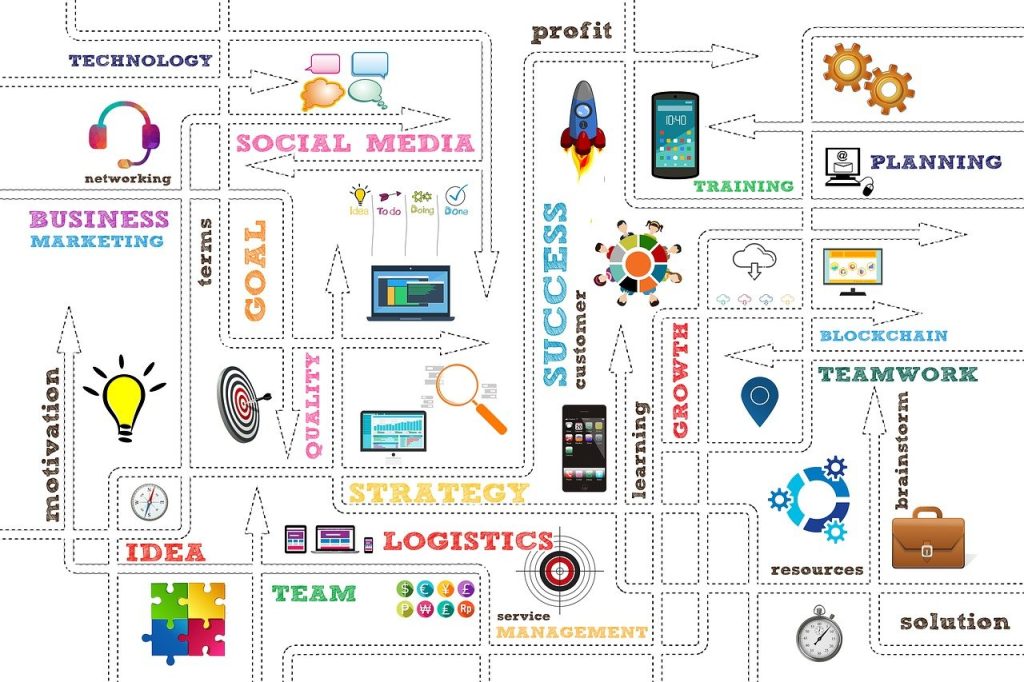The future of Agile
I wanted to write about where I think the future of software development methodology is, in terms of practical application of a process or framework to do it better. There’s often a ‘Program Du Jour’ effect, i.e. everyone jumping on the bandwagon of the ‘next big thing’ & that means pure improvement advantages often get lost.
We see this often, as frameworks like SAFe, or approaches like Lean come along, they get adopted, munged & basterdised with other ‘knowns’ to produce these overly complex proprietary delivery frameworks sold by management consultancy firms as the silver bullet to all your needs.
And we’re all a bit bored. I maintain I am sick to death talking about Agile yet here I am talking about it again!

I think the evolution of delivery for software (regardless of size or scale) in the workplace in today’s world is more pillars of both behaviours & tactical steps to maximise the most efficiency in any environment AND be compatible with the most people, projects & environment. Yes its probably taking a bit from Lean, a sprinkling of SAFe, a jizzem (!!) of the Agile manifesto BUT the special sauce is going to be the quality of who delivers it.
Here are those key pillars I talked about, here’s what I reckon they are;
- Delivery Managers being highly & broadly technical, de-facto standard.
Delivery Managers need to be more than just glorified Scrum Masters, I’ve spoken about this before here. DM’s need to be able to pretty much build software in their own right. It makes for much more of an effective leader in a technical team. I maybe even talking about more than just the cloud-fundamentals exams I get DM’s to do such as AZ-900, Im talking about DM’s being able to spin up pipelines, IaaS, landing Zones & actually know their way around an IDE.
- Software delivery teams conversely knowing more than just software engineering.
For any team, indexing higher on the other-skills in the SDLC is key. Software engineers should strive to be BA’s, be able to put together a service blueprint or map out some UX. DBAs need to be able to think about & articulate a test approach or be able to speak to a C-level executive about features. Importantly everyone needs to be able to speak fluently & articulately.
Agile methodologies have revolutionized the way software development teams operate, emphasizing adaptability, collaboration, and iterative progress. As we stand on the cusp of a new era in technology, it’s essential to envision the future trajectory of Agile. In this exploration, we delve into emerging trends, challenges, and opportunities that will shape the evolution of Agile methodologies.
- Agile at Scale:
Agile has traditionally thrived in small to mid-sized teams, but as organizations grow, scaling Agile becomes imperative. The future of Agile lies in its ability to accommodate larger teams and complex projects while maintaining its core principles. Frameworks like Scaled Agile Framework (SAFe), Large-Scale Scrum (LeSS), and Disciplined Agile Delivery (DAD) provide guidelines for scaling Agile practices. However, the future will likely witness further refinement and customization of these frameworks to suit diverse organizational contexts.
- Agile Beyond IT:
While Agile originated in software development, its principles have transcended the realm of IT. The future of Agile extends to various industries, including marketing, HR, finance, and beyond. Agile frameworks such as Scrum, Kanban, and Lean are being adapted and applied outside of IT to enhance collaboration, streamline processes, and improve responsiveness to change. This trend will continue as organizations recognize the value of Agile in fostering innovation and staying competitive in rapidly evolving markets.
- DevOps Integration:
The synergy between Agile and DevOps is undeniable, as both emphasize collaboration, automation, and continuous delivery. In the future, the boundaries between Agile and DevOps will blur even further, leading to a seamless integration of development and operations processes. DevOps practices such as infrastructure as code, continuous integration/continuous delivery (CI/CD), and automated testing will become integral components of Agile workflows. This convergence will enable organizations to accelerate time-to-market, enhance product quality, and foster a culture of continuous improvement.
- Agile AI and Automation:
The proliferation of artificial intelligence (AI) and automation presents new opportunities and challenges for Agile teams. AI-powered tools can augment Agile practices by providing insights, automating repetitive tasks, and predicting project outcomes. However, integrating AI into Agile workflows requires careful consideration of ethical implications, data privacy concerns, and the potential impact on team dynamics. The future of Agile will involve harnessing the power of AI and automation while preserving human ingenuity and empathy at the core of Agile principles.
- Agile Leadership and Culture:
Leadership and culture play pivotal roles in the success of Agile transformations. In the future, Agile leadership will evolve to encompass servant leadership, empathy, and a focus on enabling self-organizing teams. Organizations will prioritize creating a culture of trust, transparency, and psychological safety, where experimentation and learning are encouraged. Agile coaches and change agents will play a crucial role in guiding organizations through cultural shifts and empowering teams to embrace Agile values and principles.
- Agile Sustainability and Resilience:
In an era marked by unprecedented challenges such as climate change, pandemics, and geopolitical uncertainties, Agile methodologies can foster organizational sustainability and resilience. The future of Agile will see increased emphasis on adaptive planning, risk management, and sustainability practices. Agile teams will prioritize delivering value incrementally, minimizing waste, and responding swiftly to changes in the external environment. Sustainability metrics and practices will be integrated into Agile frameworks, enabling organizations to pursue their mission while mitigating long-term risks.

Conclusion:
As we gaze into the crystal ball of Agile methodologies, one thing becomes clear: the future is bright with possibilities. From scaling Agile to embracing DevOps, AI, and automation, the future of Agile is characterized by adaptability, innovation, and a relentless pursuit of excellence. By embracing these emerging trends and staying true to Agile values and principles, organizations can navigate the complexities of the digital age and thrive in an ever-changing landscape. The journey ahead may be challenging, but with Agile as our compass, we are poised to chart a course towards a future of continuous evolution and sustainable success.




